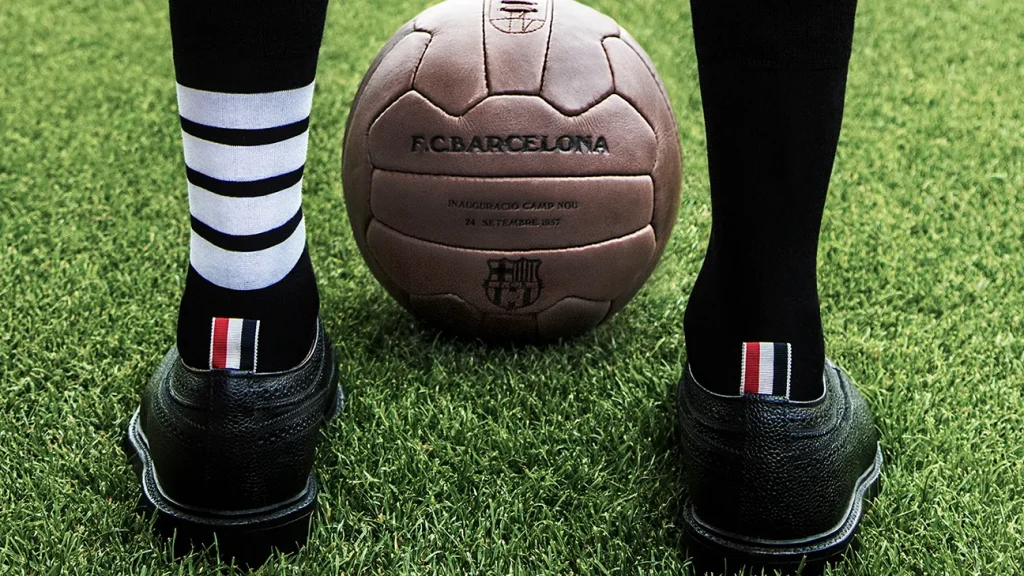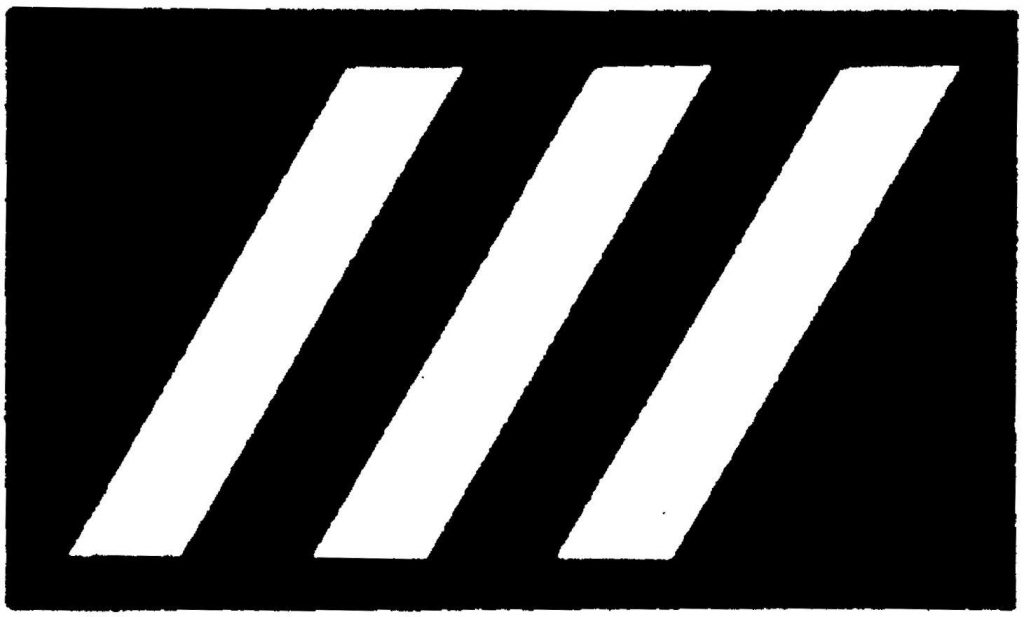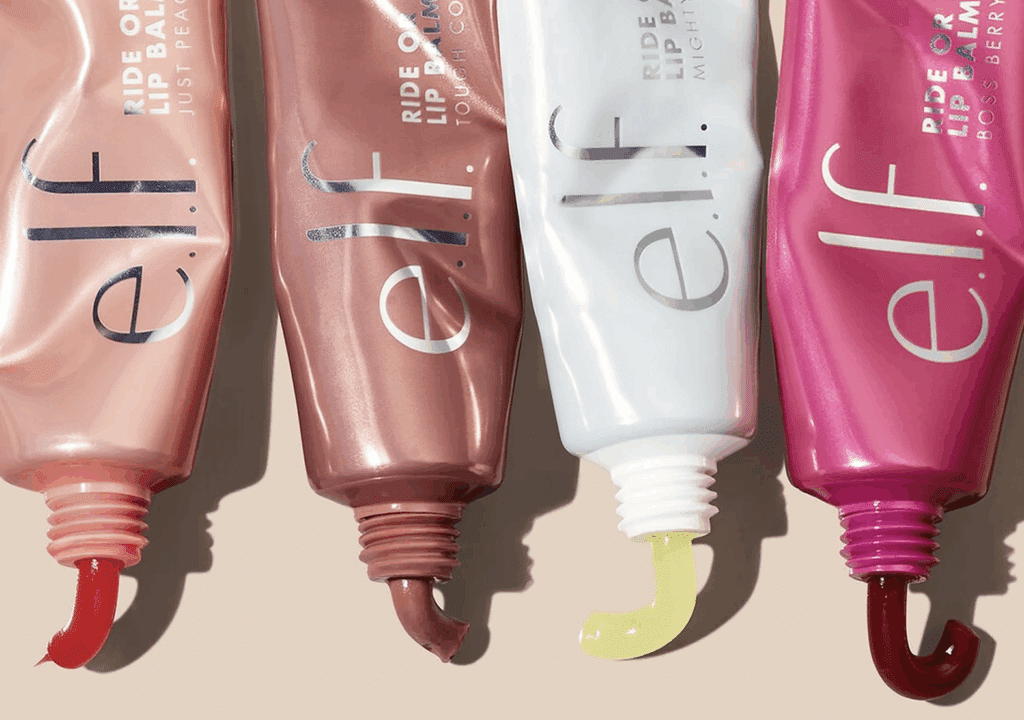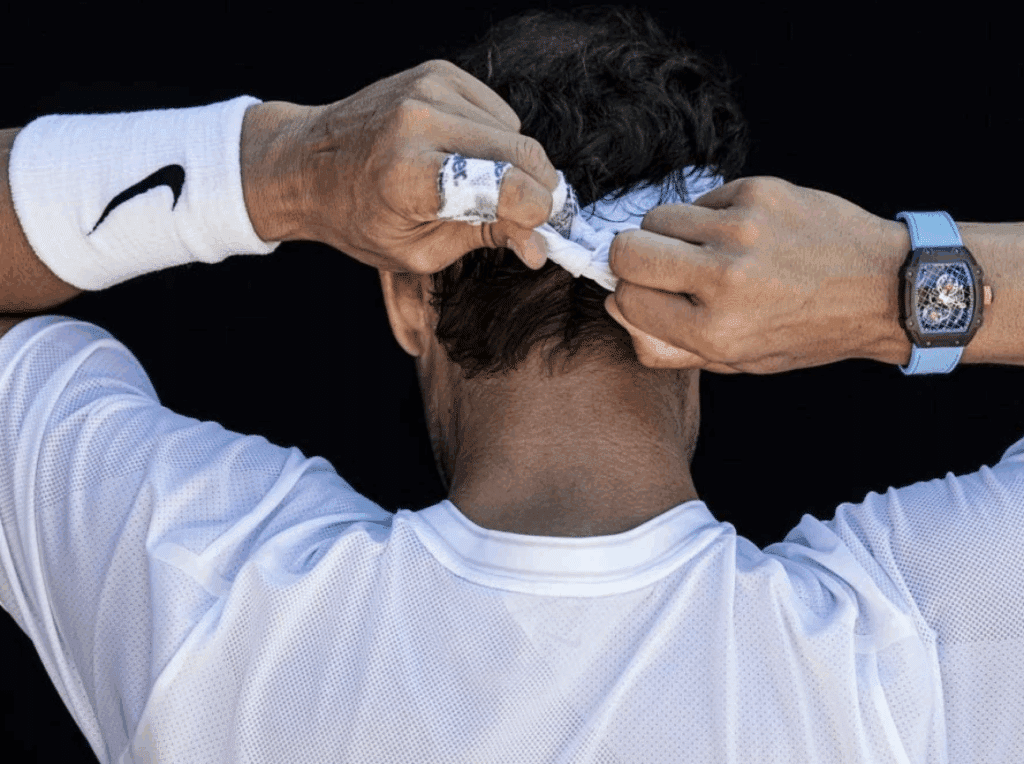A stripes-centric legal battle between adidas and Thom Browne is heating up. On the heels of a New York federal court refusing to toss out the trademark case that adidas filed against it last year, Thom Browne has filed its answer, complete with 18 affirmative defenses – and a counterclaim aimed at getting one of adidas’ 3-stripe trademark registrations canceled. In addition to denying the bulk of the allegations that adidas has made against it in its complaint, Thom Browne sets out an array of affirmative defenses, arguing that, among other things, it should be shielded from liability because adidas failed to take action against it – in a timely manner – over its use of a 4-stripe pattern, which has appeared on Thom Browne wares since 2009.
In furtherance of its Laches, Acquiescence, and Estoppel defense, Thom Browne claims that adidas has been aware of its use of the 4-stripe mark since 2007 when “adidas complained about Browne’s use of three horizontal parallel bands on its clothing,” prompting it to adopt a logo that consists of “four horizontal parallel bands.” From 2009 through 2018, which is when adidas first initiated an opposition proceeding over one of Browne’s 4-stripe marks in the European Union, Thom Browne claims that “adidas did not complain about [its] use of four horizontal parallel bands on clothing.”
The New York-based fashion brand also claims that “throughout this period of time … there have been no instances of actual confusion between [its] use of four horizontal parallel bands, and adidas’ use of three stripes.”

In connection with other affirmative defenses, the brand asserts that it and adidas operate in “entirely separate markets, at vastly different price points, and are not competitors,” thereby, diminishing the likelihood of confusion. Beyond that, Browne argues that it despite adidas’ allegations to the contrary, it has “not encroached into adidas’ market,” and that “any changes to [its] product line over the years” – i.e., its expansion from high fashion into sportswear/activewear – “has been natural and anticipated.”
Additionally (and setting the stage for its cancellation-focused affirmative defense), Browne argues that adidas lacks robust rights in the 3-stripe motif, as the German giant’s use of stripes on clothing and footwear “has not been exclusive.” In fact, Browne asserts that “numerous third parties use stripes, in multiple variations and iterations, on clothing and footwear,” and claims that adidas has “failed to police the market, and, as a result, has allowed third parties to use stripes on clothing and footwear,” thereby, removing adidas’ ability to make its trademark claims in this case. (The failure-to-enforce claim is an interesting one given that later on in its filing, Browne specifically points to adidas’ “notoriety as an overzealous enforcer of its actual and perceived rights in its ‘Three- Stripe Mark.’”)
With the foregoing defenses (and others) in mind, counsel for Thom Browne is seeking “a judgment dismissing the complaint, for costs and disbursements, an award of attorneys’ fees, and such other and further relief as to the Court seems proper.”
Thom Browne’s Cancellation Counterclaim
Turning its attention to its counterclaim, Thom Browne asserts that adidas’ “Three-Quadrilaterals Design” mark (Registration No. 4,910,643) is “merely ornamental and/or aesthetically functional” and “has not acquired secondary meaning.” Pushing for the court to cancel the registration, which extends to “articles made of leather and imitation leather,” clothing, and “athletic sporting goods,” Thom Browne argues that during the registration process, adidas did not “specifically establish that the design is perceived as an ‘indicia of source,’” and thus, the U.S. Patent and Trademark Office (“USPTO”) should never have registered the mark back in 2016.

In responding to a March 2015 Office Action from the USPTO, which preliminarily refused to register the mark on the basis that it was “merely a decorative or ornamental feature of the goods,” Thom Browne claims that “nearly all” of the product photographs that adidas provided to the USPTO show the Three-Quadrilaterals Design used alongside the “adidas” work mark and/or its “Badge of Sport” mark, “if they show the Three-Quadrilateral Designs at all.” In short: Thom Browne claims that adidas did not establish that the Three-Quadrilaterals Design, by itself, serves as an indicator of source for consumers.
“The Three-Quadrilaterals Design is merely ornamental and/or aesthetically functional as applied to the goods” cited in the registration, Browne alleges, and in lieu of a showing of secondary meaning, “the mark is not likely to be perceived by the consuming public as an identification of the source of the goods.”
Thom Browne states that it “believes it is likely to be damaged by maintenance of adidas AG’s Registration No. 4,910,643 because adidas is asserting that registration against Thom Browne in this case in an effort to disrupt Thom Browne’s business.” As a result, Browne is looking to have “the complaint and each and every purported claim for relief be dismissed with prejudice,” and judgment entered in Thom Browne’s favor on its counterclaim, including an order from the court cancelling the adidas trademark registration at issue.
In the complaint that it filed in June 2021, in which it sets out claims of trademark infringement, unfair competition, and dilution, adidas argues that in furtherance of Thom Browne’s “recent encroach[ment] into direct competition with adidas by offering sportswear and athletic-styled footwear that bear confusingly similar imitations” of adidas’s three-stripe mark, which adidas asserts that it has “extensively and continuously has used and promoted … in connection with apparel and footwear … for over half a century.”
The case is adidas America, Inc., et al., v. Thom Browne, Inc., 1:21-cv-05615 (SDNY).














